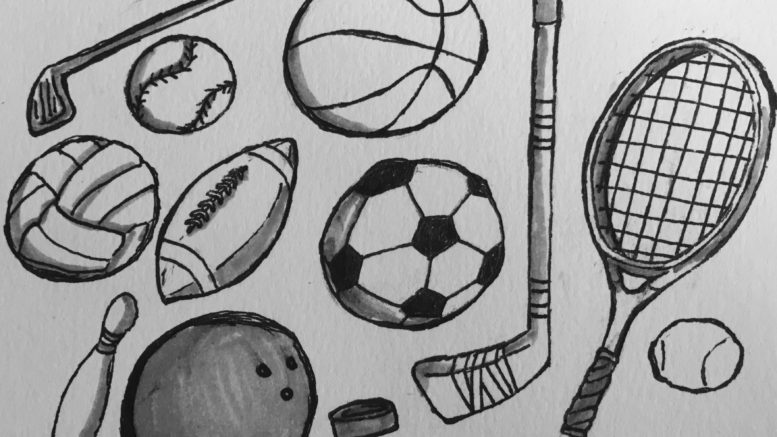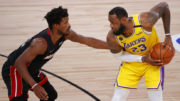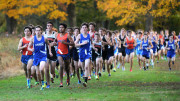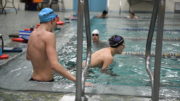Bottom Line: The growth of professional sports is putting undue
pressure, both physical and psychological, on students.
Unlike in any other country in the world, the American experience has been defined by “America’s pastime,” otherwise known as athletic sports. Particularly in the last 100 years, the expansion of professional sports has influenced American culture in an immense number of ways. Athletes, many from low income backgrounds, epitomize the American dream, coming into a spotlight of international fame and fortune on the basis of skill. The exposure and idolization of sports has changed the face of mainstream cable TV and media.
However, dangerous specialization of young students in a particular sport has also resulted in skewed college admissions. Overall, we have reviewed the indisputably expansive impact of the growth of professional sports on American society as a whole.
No matter where you grew up, what your familial situation looked like or what your ethnic background was, nearly every American child is exposed to sports in some way in their youth. As we sat watching Yankee games on TV, playing pickup basketball during recess or traveling for competitive soccer teams, sports played a critical role in teaching us important life lessons.
Ethics are important in sports because they provide rules that help regulate the game and keep them fair and honest. There are established guidelines that the players are aware of in order to play the game right. No player has an unfair advantage over another player, whether that be through connections or purposely injuring an opponent and getting away with it.
Unethicality is rampant in our world, however sports and the ethics of their game hold “morality” to a much higher standard. The saturation and exposure of professional sports, as teams are under a microscope with the enormous scale of viewership, means that when there are questionable actions in a sports game, they evoke widespread accountability.
Sports unite people because it is real, mostly fair, and based on raw talent. For example, there was a video of Neymar, a soccer player, getting pushed over and getting severely hurt. This illegal move was only penalized as a yellow card, making fans very mad. The fact that this brought communities of people together just goes to show how unifying and impactful sports are. Whether one plays a sport or watches a sport, nearly everyone has had a personal connection to it because it is a fair game based on teamwork and honesty as well as talent.
Just as the “ethics” taught by sports have had many impacts, particularly as promoted by professional sports teams, the strive to “go pro” has led parents and children alike to put immense stake in athletic goals. Pressure put on kids from a very young age can be important in teaching them determination, hard work and ambition, but also can be very difficult to live up to.
Intense pressure plagues young student athletes on a daily basis. Whether it is at practice or at home, expectations are set up by parents, coaches, and even other students. There are many different facets of an athlete’s life that support the player, which is especially important considering the fact that failure of these systems can have devastating consequences.
Take for example the case of Hunter Holmes of Redmond Oregon. After suffering a concussion, he would get headaches that went unrecognized by his family. Two months after a second concussion that was a year after his first, he would take his own life. His father lamented in an interview with the Central Oregonian, “‘I’m just a guilty dad at this. When your son goes down or something like that, it’s not so concerning. It’s like, ‘Rub some dirt on it and get back up’ kind of thing,” (Central Oregonian). This is not to place blame on the father, or the parents, but rather the culture surrounding sports, where non-fatal injuries are seen as something that can be brushed off.
In light of this pressure and prospect of scholarships and pro-athletics for very talented students, kids are pushed to choose “their” sport at younger and younger ages. Not only does this have a psychological impact on growing kids, but it also has physical implications. According to a study performed by assistant professor of orthopaedic surgery at Columbia University Medical Center Charles A. Popkin, MD, 57.2 percent of his patients’ parents wanted their children to play professional or college sports and 33 percent of them only played one sport.
According to a Reuters study, when compared to athletes who play a diversity of sports to those who specialize, kids who play one sport are 81 percent more likely to get an overuse related injury. The increase in specialization among young athletes is a direct result of the absurd pressure applied to them and puts them in grave danger of poor physical and psychological development.
However, some of the increased pressure in youth athletics is combated by the supportive community. “Having supportive coaches and teammates helps you manage the pressure and keep it from negatively affecting you. It has a decent impact on me in and out of school, as I can use it to make myself want to succeed,” said Timothy Silkowitz (’21), a member of the Westhill Varsity Soccer team. Good support systems are needed for young student athletes in order to prevent tragedies such as that of Hunter Holmes.
A deeper analysis of the effects of athletic activities on American culture reveals that sports play a role in breaking down class barriers. Sports are celebrated for building teams, bringing people together through healthy competition. Soccer in particular is a sport where teams are formed of people from diverse communities and socioeconomic statuses, bridging the divide between people who would not normally interact. Through this, people learn how to work with those from all walks of life.
“I have met so many of my friends through the sport, whether it was through Westhill soccer or my club team. Each person has their own love for the sport and I think it is amazing that we could all get together and enjoy our own connection. Soccer has definitely connected me with many of my friends with all different types of backgrounds,” varsity soccer captain Stephen Magnifico (‘20) said.
While certain situations may arise where the cost of equipment or field time may exclude people with less disposable income, public schools often offer financial aid for students who could not otherwise participate in sports, and at private schools, disadvantaged students may be recruited for sports scholarships. NCAA.org reports that “Divisions I and II schools provide more than $2.9 billion in athletics scholarships annually.” This is another method by which sports encourage class equality, as universities admit students who otherwise could not afford higher education.
With the growth of professional athletics and the increased necessity for students to attend college, college athletics have grown into a unique scouting ground for professional sports teams. Therefore, athletics have created a pathway to the pros for many students while similarly providing them a chance to go to college they may not have otherwise gotten.
When it comes to college admissions, athletes can sometimes have an advantage. They are not required to have as high of an academic score as students who do not participate in sports. This can make sports seem as a priority over academics, especially with Division I universities.
According to theatlantic.com, “All applicants to Harvard are ranked on a scale of one to six based on their academic qualifications, and athletes who scored a four were accepted at a rate of about 70 percent. Yet the admit rate for nonathletes with the same score was 0.076 percent—nearly 1,000 times lower.”
These numbers apply to almost all universities. James Schulman and former president of Princeton University William Bowen discovered that athletes were given a 48 percent admission boost when looking at 30 selective schools. This can be compared to a 25 percent boost for legacy students and 18 percent for racial minorities.
The different levels of college athletics can be divided into three divisions, Division I prioritizing sports over academics as the most demanding of the three. Division II has more of a balance between academics and athletics so it is not as rigorous, and Division III allows for a well-rounded college experience.
Sports also have had an enormous impact due to the exposure the American public receives to them. With the growth of televised sporting events, entertainment athletics have become a multi-billion dollar industry. Events this past month such as the NBA Allstar Game and the Superbowl highlight just how wide-reaching sports are. With millions of viewers watching these events live, they become platforms for all kinds of conversation, depicted most recently by the discussion following Shakira and Jennifer Lopez’s Superbowl halftime performance.
The idolization of athletes also enhances the influence of sports on American culture. Athletes become pinnacles of the success that Americans seek in their own lives, while similarly feeling tied to their fans as they watch the progressions of the ups and downs of their career. This creates a distinct connection between fans and their favorite players, a connection epitomized by the tragic sense of loss felt by the American public at Kobe Bryant’s sudden death.
This position of unimaginable fame also allows athletes to influence culture in a number of different ways that extend beyond the sport they play. They pioneer new fashion and athletic wear trends with brands like Jordan capitalizing on the name recognition and skill of their founders. Athletes also use their positions as platforms for charity, with baseball players like Curtis Granderson bringing their sport to low-income communities.
However, some view social justice advocacy as not having a place in sports. The most famous example of pro-sporting protest is Colin Kapernick’s kneeling during the national anthem in support of the Black Lives Matter movement. He received significant lashback for his protest despite the platform it provided this movement because of its inappropriate lack of respect for the anthem and the game of football itself.
Overall, it is indisputable that the growth of professional sports has played a fundamental role in shaping American culture as a whole. Nevertheless, while the rise in youth athletics as sparked by professional sports has been important in teaching children a sense of community, ethics and acceptance, it has also influenced society for the worse. The unattainable strive to meet the skill and success that is largely derived in “luck” has led parents to put unreasonable and dangerous pressure on their children. This pro-athlete training ground has also skewed college admissions and resulted in athletes with exceeding societal influence.





